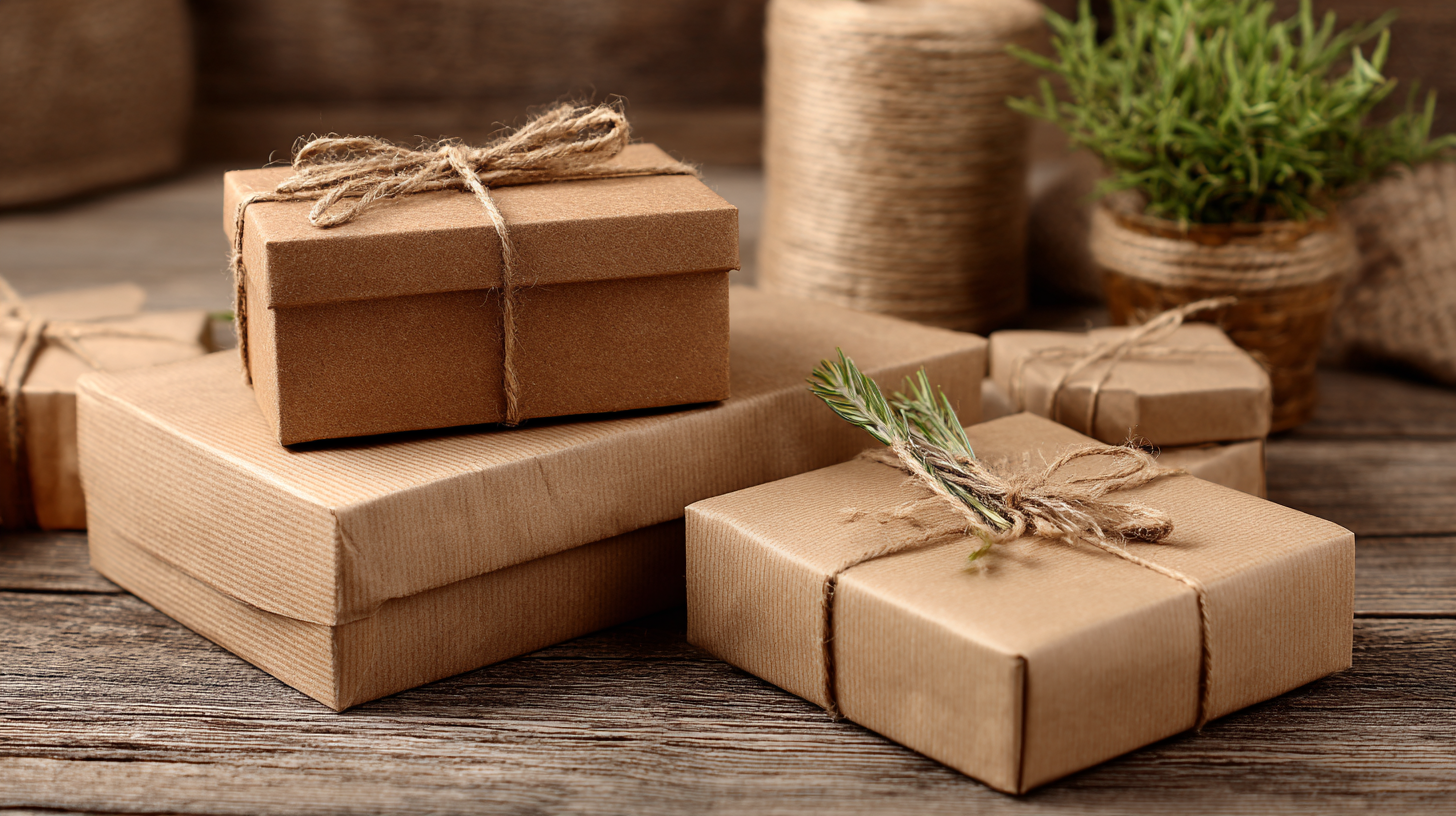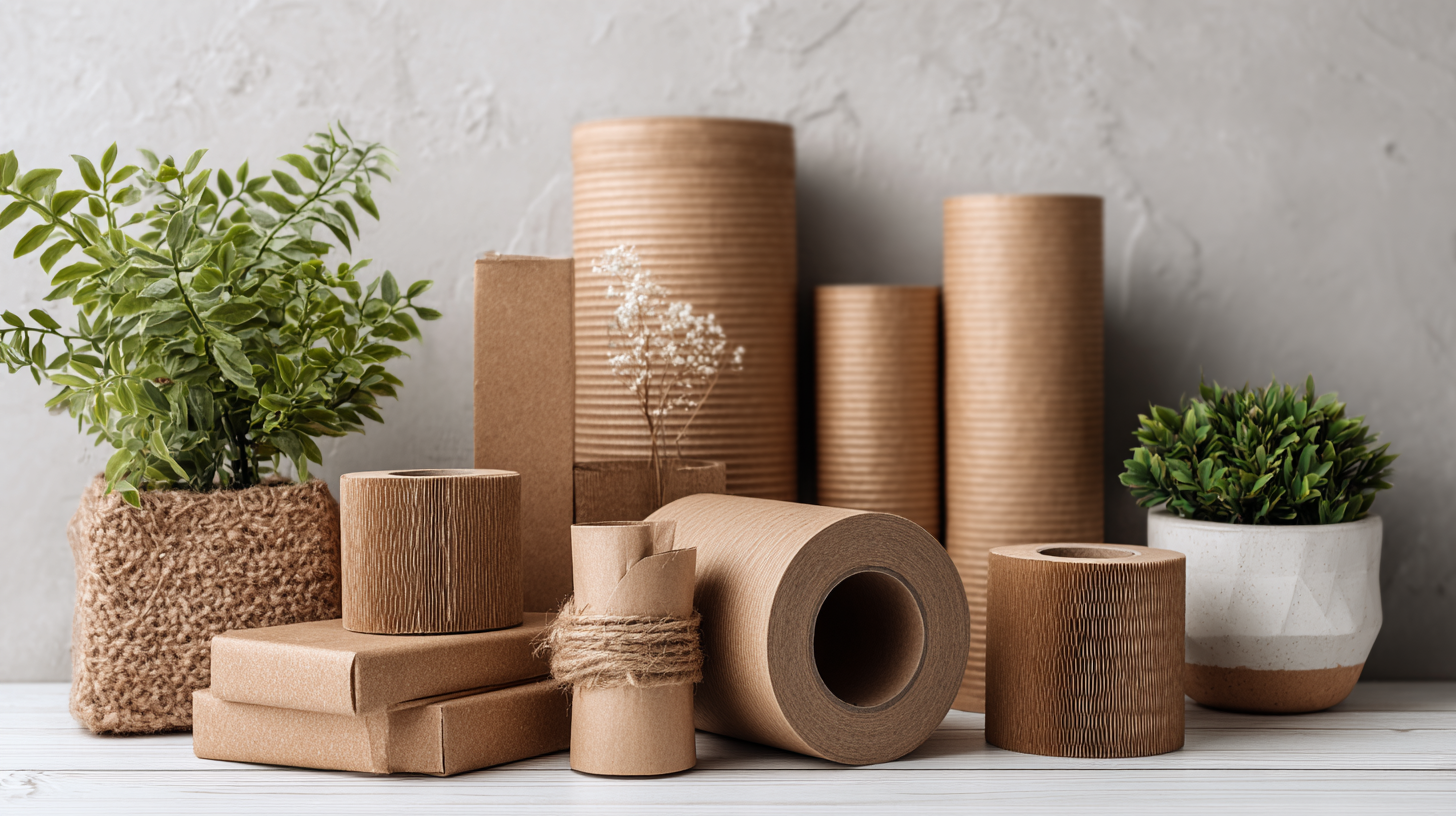Unlocking Sustainable Solutions A Comprehensive Guide to Best Eco Packaging Practices
In an era marked by growing environmental awareness and consumer demand for sustainability, the importance of Eco Packaging cannot be overstated. According to a 2022 report by Smithers, the global market for sustainable packaging is projected to reach $976 billion by 2024, highlighting a significant shift towards eco-friendly alternatives. This shift is driven by not only regulatory changes but also a profound consumer preference for brands that prioritize environmental responsibility. Companies that adopt best practices in Eco Packaging positioned themselves not only to meet these demands but also to strengthen their market presence. In this comprehensive guide, we will explore the top strategies that can help businesses unlock sustainable solutions in packaging, ensuring they contribute positively to the environment while enhancing their brand value.

Understanding Eco-Friendly Packaging Materials: Types and Benefits
Eco-friendly packaging materials play a crucial role in reducing environmental impact and promoting sustainability. There are various types of eco-friendly packaging options available, each offering unique benefits. Biodegradable materials, such as corn starch and sugarcane, decompose naturally over time, minimizing landfill waste. Similarly, compostable packaging not only breaks down effectively but also enriches the soil, making it a double win for both the environment and agricultural practices.
Another popular choice is recycled paper and cardboard, which not only utilizes post-consumer waste but also reduces the need for virgin materials. This significantly lowers energy consumption and greenhouse gas emissions during production. Additionally, reusable packaging systems, such as glass jars and metal containers, encourage a circular economy, allowing consumers to use the materials multiple times before disposal, further decreasing the demand for new packaging products. By choosing these eco-friendly options, businesses can contribute to a sustainable future while meeting the growing consumer demand for environmentally responsible practices.
Top Innovations in Biodegradable Packaging Solutions
The rise of environmental consciousness has spurred innovation in biodegradable packaging solutions, transforming the way businesses approach their sustainability efforts. Various materials now go beyond traditional plastic, offering eco-friendly alternatives that decompose naturally without harming ecosystems. For instance, plant-based polymers, such as polylactic acid (PLA), are derived from renewable resources like cornstarch and sugarcane. These materials not only provide the necessary durability for packaging but also break down efficiently in composting facilities, contributing to a circular economy.

Additionally, innovations in packaging design are enhancing the functionality of biodegradable options. Companies are exploring the use of mycelium, a mushroom-based material that serves as a robust alternative to conventional foam packaging. This innovative approach not only minimizes waste but also enriches the soil upon decomposition. Moreover, businesses are increasingly aware of consumer preferences, leading to the development of packaging that is not only eco-friendly but also aesthetically appealing and user-friendly. As the industry evolves, these innovations in biodegradable packaging continue to pave the way for a more sustainable future.
Exploring Recyclable Packaging Options: What You Need to Know
In today's eco-conscious world, choosing recyclable packaging options is a crucial step towards sustainability. Understanding the various materials available and their recycling processes is essential for businesses looking to reduce their environmental footprint. Common recyclable materials include cardboard, paper, glass, and certain plastics. Each of these materials can be processed and reused in different ways, contributing to a circular economy.
Tip: Always check the recycling symbols on packaging materials. Familiarize yourself with local recycling guidelines to ensure proper disposal and to optimize the recycling process. This can significantly reduce contamination rates and promote effective recycling practices.
Moreover, innovative options such as bioplastics and plant-based materials are emerging as viable alternatives to traditional packaging. These options can not only reduce waste but also minimize the reliance on fossil fuels. Businesses should consider these alternatives to meet consumer demand for greener solutions.
Tip: Collaborate with suppliers that prioritize sustainable practices in their packaging solutions. By investing in eco-friendly materials and supporting responsible sourcing, businesses can enhance their brand reputation and appeal to environmentally conscious consumers.
Unlocking Sustainable Solutions: A Comprehensive Guide to Best Eco Packaging Practices
| Packaging Type | Recyclability | Main Material | Carbon Footprint (kg CO2e per kg) | Comments |
|---|---|---|---|---|
| Cardboard Boxes | Highly Recyclable | Tested Pulp | 0.68 | Widely accepted recycling |
| Glass Jars | Fully Recyclable | Soda-lime Glass | 1.90 | Reusable with low chemical leaching |
| Aluminum Cans | Recyclable | Aluminum | 1.30 | High recovery rates |
| PET Bottles | Recyclable | Polyethylene Terephthalate | 2.70 | Can be recycled multiple times |
| Biodegradable Bags | Biodegradable | PLA (Polylactic Acid) | 1.50 | Requires industrial composting facilities |
Best Practices for Sustainable Packaging Design and Development
 Sustainable packaging design and development are critical in today's eco-conscious market. According to a recent report from Smithers Pira, the global sustainable packaging market is expected to reach $500 billion by 2027, reflecting an increasing awareness of environmental impact among consumers and brands alike. With over 70% of consumers willing to pay more for sustainable options, businesses must embrace eco-friendly practices to remain competitive.
Sustainable packaging design and development are critical in today's eco-conscious market. According to a recent report from Smithers Pira, the global sustainable packaging market is expected to reach $500 billion by 2027, reflecting an increasing awareness of environmental impact among consumers and brands alike. With over 70% of consumers willing to pay more for sustainable options, businesses must embrace eco-friendly practices to remain competitive.
When designing sustainable packaging, prioritize materials that are recyclable or biodegradable. For instance, using plant-based plastics can significantly reduce carbon footprints. Additionally, consider optimizing the size and weight of packaging to minimize waste and transportation emissions. Implementing minimalistic designs can lead not only to less material usage but also to cost savings.
Tips: Always conduct life cycle assessments to determine the environmental impact of packaging options. Collaborating with suppliers who specialize in sustainable materials can also enhance your packaging strategy and ensure compliance with eco-certifications. By integrating these best practices, businesses can contribute to a healthier planet while meeting consumer demands for sustainability.
Top Strategies for Reducing Packaging Waste and Carbon Footprint
In recent years, the escalating concern over environmental sustainability has prompted industries to adopt eco-friendly packaging practices. According to a report by the Ellen MacArthur Foundation, plastic packaging contributes to an estimated 120 million tonnes of plastic waste each year, with only 9% being recycled. By implementing strategies designed to reduce packaging waste, businesses can significantly lower their carbon footprint. For instance, using compostable materials can reduce greenhouse gas emissions by up to 90% compared to traditional plastic packaging methods.
Additionally, optimizing packaging design plays a pivotal role in sustainability efforts. The Sustainable Packaging Coalition suggests that minimizing excess packaging can lead to a reduction in material costs and waste. Innovations such as lightweight materials and modular designs not only decrease the volume of waste but also enhance transportation efficiency, thereby reducing carbon emissions associated with logistics. Implementing such best practices can be beneficial not only for the planet but also for the bottom line, as consumers increasingly prefer brands that prioritize sustainability.
